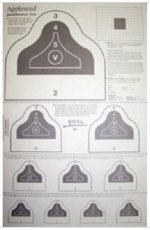rose728751
New member
Tanks
Back in the 77, 79 time frame we used to afix a modified M16 (for a 22) on to the main gun of the M60A1 tank and have small Tanks,BMP, truck, bunkers and such on a flat berm that was about 5 foot high at about 75 to 100 feet out and practice a mini gunnery, I guess the Army was trying to save some money, they also tryed something called a TIP JIG,in 80,81 time frame used a 30 MM barrel inserted in to the main gun and fired a 30MM out of the 105.
Back in the 77, 79 time frame we used to afix a modified M16 (for a 22) on to the main gun of the M60A1 tank and have small Tanks,BMP, truck, bunkers and such on a flat berm that was about 5 foot high at about 75 to 100 feet out and practice a mini gunnery, I guess the Army was trying to save some money, they also tryed something called a TIP JIG,in 80,81 time frame used a 30 MM barrel inserted in to the main gun and fired a 30MM out of the 105.
Last edited:

